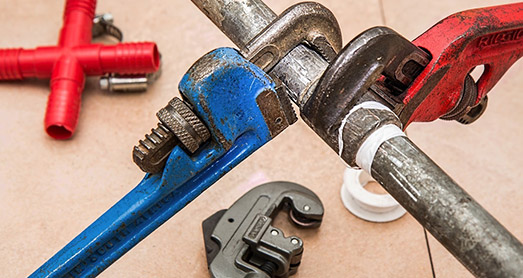Sometimes, bleeding your radiators can cause your boiler pressure to drop. When this happens, it will stop working until you increase the pressure again.
Video: How to adjust your boiler pressure
Watch our quick step-by-step video to learn how to adjust the pressure.
Step-by-step: Adjusting your boiler pressure
The front of your boiler has a pressure gauge. This tells you the current pressure of your boiler. Boiler pressure is measured in 'bars', and good boiler pressure is between 1 and 1.5 bar. If you notice that your boiler has dropped below 1 bar, you'll need to increase it.
This is easy to do:
- Below your boiler are pipes and valves. These are the filling valves and will increase the boiler pressure. Move the valve one quarter turn anti-clockwise on one pipe and use a screwdriver to adjust the screw on the braided cord.
- You'll hear a noise come from the boiler. This means you're doing everything right. Watch the pressure gauge on the front of the boiler and you'll see it rise.
- Once the needle reaches between 1 - 1.5 bar, you can tighten the screw again. Then, adjust the valve back to its starting position.
- Your boiler will now be working, and the pressure will be at a good level. If you have filled it above 1.5 bar, you can bleed a radiator to reduce the pressure.
If you don’t feel confident doing this, please contact us. If you have concerns about your boiler pressure, or don't feel confident doing this alone, please get in touch. We're happy to help you.

Repairs to your home
Everything you need to know about looking after your home. Find out what is your responsibility to maintain, what is ours, along with emergency and routine repair timescales.
Find out more